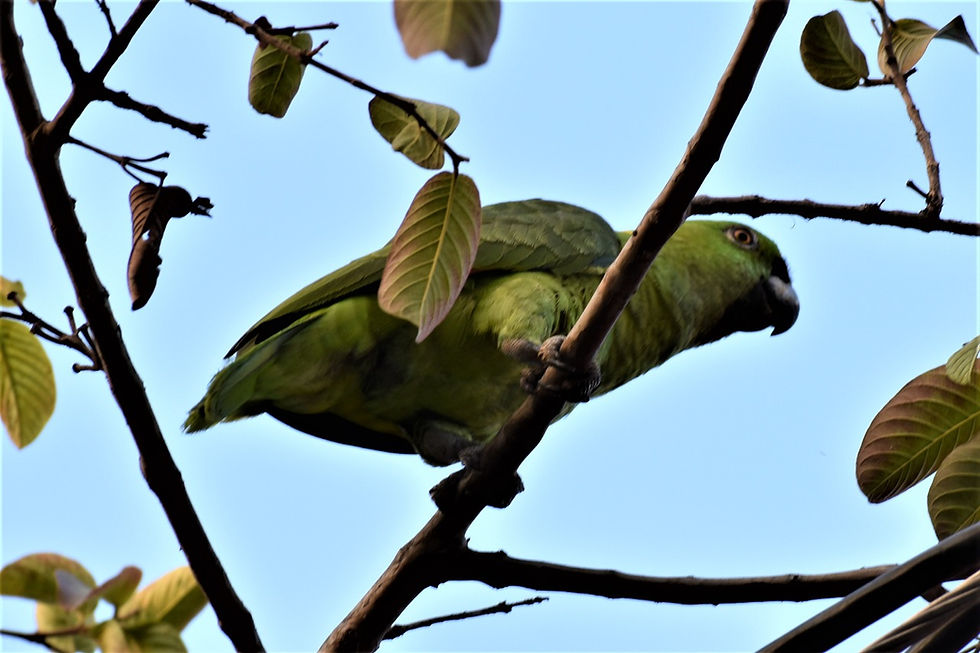Amphipterygidae: A Relic of Honduras’ Beautiful Past
- Martin A. Murillo

- Aug 4
- 3 min read
Honduras boasts a great diversity of flora and fauna, and when it comes to insects, they are no exception. This time, we explore a family of insects with a curious distribution in Mesoamerica—co-endemic to three North-Central American countries: Mexico, Guatemala, and Honduras.
These organisms vary in shape, coloration, and size, but they all face a similar level of threat—one tied to their dependence on the same vital liquid as we are: water.
This article focuses on a family of damselflies (order Odonata). This family has remained a mystery since it was first discovered by the foremost authority on dragonflies and damselflies of his time (Odonata: Zygoptera), Baron Michel Edmond de Sélys Longchamps, who described the first species in 1853 under the classic name Amphipteryx agrioides, originally from Colombia. However, this genus has not been seen again in South America.
It wasn’t until Biologia Centrali-Americana, a work by Philip Powell Calvert published in 1901, that this genus was recorded for Mexico and Guatemala. By 1982, odonatologist Dennis R. Paulson mentioned the possible distribution of Amphipteryx agrioides in Honduras. Today, this Mesoamerican genus of zygopterans includes five species distributed from Mexico through Guatemala and into northern Honduras. Of these, Amphipteryx meridionalis and A. jaroli have been found in Honduras, specifically in the cloud forests of Pico Bonito National Park.
The Amphipterygidae Family in Honduras
In Honduras, as in the rest of Central America, cloud forest habitats are critically endangered ecosystems that are disappearing rapidly. It is estimated that around 80% of the original vegetation cover in the lower forest zones has already been lost or altered. However, forests at higher mountain elevations have remained relatively intact for longer, mainly due to their inaccessibility.
The increasing pressure on the remaining natural resources—driven by population growth—is now affecting cloud forests too. What once helped preserve them (difficult access) now hinders effective conservation efforts, as it also makes data collection more difficult. Very little is known about the biodiversity of these habitats, although cloud forests are characterized by high diversity and high endemism. A recent overview of the 100 most irreplaceable places for biodiversity in the world included the cloud forest in Pico Bonito National Park (Le Saout et al., 2013)—the very place where the species was first recorded, specifically in Montaña Corazal.
The species A. meridionalis is found in the departments of Comayagua and Cortés, while A. jaroli has only been recorded in the department of Atlántida to date (Figure 1). The species A. agrioides, which was the first described in the family, is no longer recorded in Honduras and has been replaced by the two species mentioned above.

Figure 1. Locations in Honduras where Amphipterygidae have been scientifically recorded.
Currently, the conservation status of the family according to the IUCN is “Data Deficient,” due to a lack of studies. However, Amphipterygidae is considered a relict family—once widespread and now restricted to cloud forests.
Species Characteristics
Amphipteryx jaroli has the typical body shape of a zygopteran—elongated and slender—with wings folded back while perched on branches, rocks, or leaves. Its body is black with three yellow-cream diagonal stripes across the thorax (Figure 2).

Figure 2. Adult Amphipteryx jaroli (Jocque & Argueta, 2014).

Figure 3. Head, thorax, and back of the damselfly Amphipteryx jaroli found in Pico Bonito National Park (Jocque & Argueta, 2014).
What’s Next?
Honduras is a surprising country when it comes to biodiversity, and as expected, new discoveries are made every day. This species has now been found in other departments but is under threat from the advancing agricultural frontier. Let’s hope researchers continue contributing to this field, helping identify more locations where species of this family occur, and let’s work together to find ways to protect them—alongside the water sources they rely on.

Figure 4. Amphipterygid nymph recorded in another department of the country; study in progress.
By: Martin Murillo, Biologist
References
References
Argueta, J.M. I. (2014). A new species in the genus Amphipteryx Selys, 1853 (Odonata, Amphipterygidae) from Pico Bonito National Park, Honduras. ZooKeys 408: 71–80. doi: 10.3897/zookeys.408.7174.
González-Soriano, E. & von Ellenrieder, N. (2009). What is Amphipteryx agrioides Selys 1853 (Odonata: Amphipterygidae)? Zootaxa 2074: 61–64.
González-Soriano, E. (2010). A synopsis of the genus Amphipteryx Selys 1853 (Odonata: Amphipterygidae). Zootaxa 28: 15–28.
Le Saout, S. et al. (2013), Protected Areas and Effective Biodiversity Conservation.Science 342, 803-805.DOI:10.1126/science.1239268
Paulso, R. D. (1982). Aquatic biota of Mexico, Central America and the West Indies, S.H. Huebert y A. Villalobos-Figueroa. San Diego State University.
von Ellenrieder, N. y Paulson, D. (2006). Amphipteryx agrioides. La Lista Roja de Especies Amenazadas de la UICN 2006: e.T1169A3301718. https://dx.doi.org/10.2305/IUCN.UK.2006.RLTS.T1169A3301718.en . Descargado el 22 de abril de 2020.





Comments